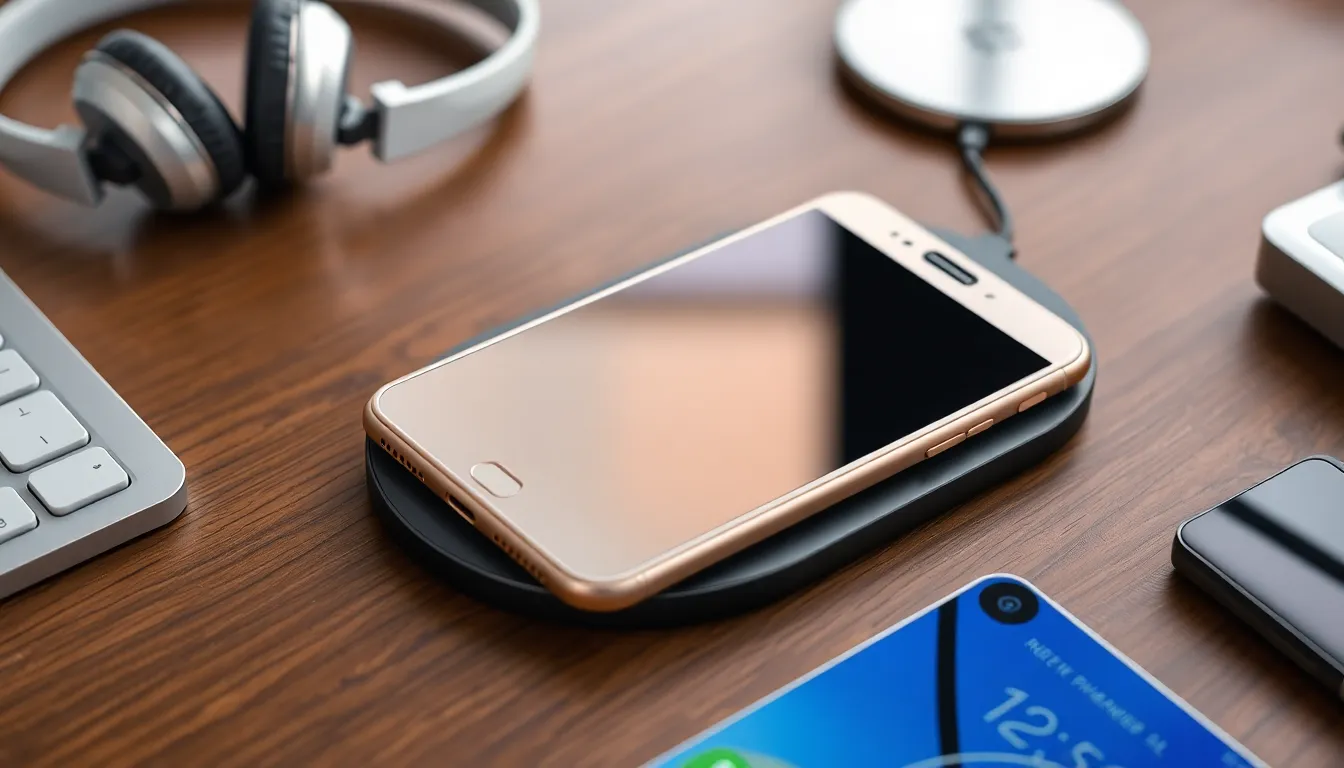Table of Contents
ToggleIn a world where technology evolves faster than a cat meme goes viral, many iPhone users are left wondering if their trusty iPhone 8 can join the eSIM party. Picture this: you’re at a coffee shop, sipping your favorite brew, and someone casually mentions the wonders of eSIM technology. Suddenly, you’re questioning your life choices—can your beloved iPhone 8 keep up with the times?
Understanding eSIM Technology
eSIM technology represents a significant step forward in mobile connectivity. Many users seek to understand how it works and its advantages.
What Is eSIM?
eSIM stands for embedded SIM. Unlike traditional SIM cards, which are physical cards inserted into devices, eSIM is built directly into the device’s circuitry. This technology allows users to activate a plan without needing a physical card. Users can switch between different mobile carriers without visiting a store. Compatibility often features in newer devices, making eSIM a popular choice among tech-savvy individuals.
Benefits of Using eSIM
Using eSIM offers multiple benefits. Flexibility ranks high on the list, as users can easily switch providers or plans through their device settings. Convenience stands out, since there’s no need to carry or change physical SIM cards. Space savings also play a role, allowing manufacturers to design slimmer devices without SIM card slots. Another advantage includes better support for multiple plans; users can store several profiles on one device. Security presents a benefit too; eSIM minimizes risks related to physical loss or theft of SIM cards.
iPhone 8 Overview

iPhone 8, released in September 2017, features a sleek design and modern capabilities. It includes enhancements in processing power, camera quality, and wireless charging.
Key Features of iPhone 8
iPhone 8 boasts a 4.7-inch Retina HD display with True Tone technology, delivering vivid colors and adaptive brightness. It runs on the A11 Bionic chip, offering fast performance for apps and gaming. Camera functions include a 12 MP rear camera, supporting advanced photo and video features like Portrait mode and optical image stabilization. Additionally, the device supports wireless charging, providing convenience for users on the go. Water and dust resistance rated at IP67 ensures durability for everyday use.
Compatibility with Network Carriers
iPhone 8 supports various network carriers, making it versatile for users. AT&T, Verizon, T-Mobile, and Sprint are among the compatible networks. Users can unlock iPhone 8 through carriers, enabling access to different plans and services. Upgrading or switching carriers often remains straightforward, offering flexibility in choosing mobile services. Users must verify compatibility by checking their carrier’s specifications, ensuring they harness the full potential of their device.
Can iPhone 8 Use eSIM?
iPhone 8 users frequently inquire about eSIM compatibility. Understanding the official stance and user experiences clarifies the situation.
Official Apple Stance
Apple confirms iPhone 8 lacks eSIM support. As such, users can’t activate cellular plans through the embedded SIM technology found in newer iPhone models. The device, released in September 2017, utilizes a traditional nano-SIM card for network connectivity. Customers seeking eSIM functionality must consider upgrades to newer models, such as iPhone XR, XS, or later versions. These devices feature the necessary hardware to support eSIM, providing benefits that the iPhone 8 does not offer.
User Experiences and Reports
User reports indicate varied experiences regarding eSIM functionality on the iPhone 8. While some users may express curiosity about alternative activation methods, many confirm that their devices are limited to traditional SIM cards. Enthusiasts sometimes attempt workarounds, but these generally fail due to hardware limitations. Users consistently note the convenience of eSIM where available, highlighting the flexibility and security benefits. Despite the desire for eSIM capability, those with an iPhone 8 remain reliant on physical SIM cards for network connections.
Alternatives to iPhone 8 for eSIM
iPhone 8 users seeking eSIM functionality often explore newer options. Several iPhone models support eSIM technology, providing various features and improvements over the iPhone 8.
Comparing Other iPhones
Models such as iPhone XR and iPhone XS offer eSIM capabilities. Users of these devices enjoy greater flexibility with mobile plans. For example, iPhone 11 and later models continue this trend with enhanced performance and dual SIM functionality. Upgrading to any of these devices opens the door to smoother carrier switching. Additionally, features like improved battery life and camera enhancements add to their appeal.
Other eSIM-Compatible Devices
Various smartphones outside the Apple ecosystem now support eSIM. Google Pixel 3 and later devices offer robust performance and seamless eSIM activation. Samsung Galaxy S20 and newer models also provide eSIM functionality. These alternatives often integrate additional features like high-resolution displays and advanced camera systems. Users looking for eSIM connectivity can find a growing number of choices in the Android market.
The iPhone 8, while a capable device in many respects, doesn’t support eSIM technology. Users looking for the flexibility and convenience of eSIM will need to explore newer models like the iPhone XR or XS. These upgrades not only provide eSIM functionality but also enhance overall performance and user experience.
For those who wish to stick with their iPhone 8, reliance on traditional nano-SIM cards remains necessary. As technology continues to evolve, users should keep an eye on future devices that may offer even more innovative features and capabilities.







